| |
Unexplained Mysteries of The Incorruptibles |
|
Source:http://en.wikipedia.org/wiki/Incorruptibility
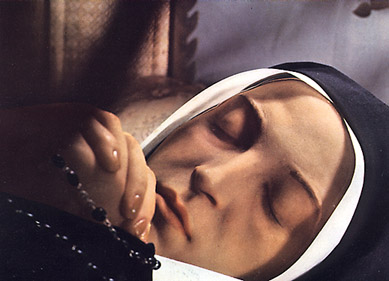 |
|
Incorruptibility is a Roman Catholic belief that supernatural intervention allows some human bodies to avoid the normal process of decomposition after death. Bodies that reportedly undergo little or no decomposition, or delayed decomposition, and are sometimes referred to as incorrupt or incorruptible or as an incorruptible. Although it is recognised as supernatural in Roman Catholicism, it is no longer counted as a miracle in the recognition of a saint.
Incorruptibility is seen as distinct from the good preservation of a body, or mummification. Incorruptible bodies are often said to have the odour of sanctity, exuding a sweet or floral, pleasant aroma. As of yet, none of these cases has been verified scientifically.
Incorruptibles are the bodies of saints that miraculously do not decay -- even after decades or even a century or more. The bodies often lie in public view in churches and shrines. Saints include: St. Clare of Assisi, St. Vincent De Paul, St. Bernadette Soubirous, St. John Bosco, Blessed Imelda Lambertini, St. Catherine Labouré, and many others. Even the body of Pope John XXIII is reputed to be remarkable well preserved. The case of Blessed Margaret of Metola is recounted in the Fortean Times article, Saints Preserve Us: "She died in 1330, but in 1558 her remains had to be transferred because her coffin was rotting away. Witnesses were amazed to find that like the coffin, the clothes had rotted, but Margaret's crippled body hadn't."
1. Saint Bernadette of Lourdes, Died 1879
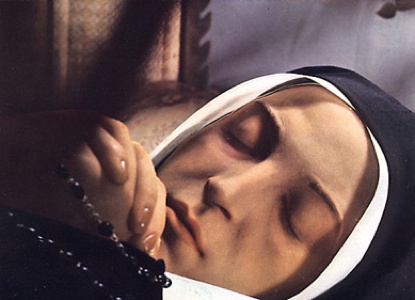
St Bernadette was born Bernadette Soubirous in Lourdes, France. From February to July 1858, she reported eighteen apparitions of “a Lady.” Despite initial skepticism from the Roman Catholic Church, these claims were eventually declared to be worthy of belief after a canonical investigation. After her death, Bernadette’s body remained “incorruptible”, and the shrine at Lourdes went on to become a major site for pilgrimage, attracting millions of Catholics each year.
2. Saint John Vianney, Died 1859
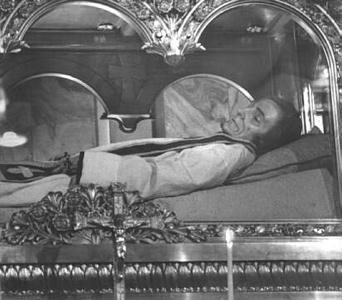
St. Jean Baptiste Marie Vianney (May 8, 1786 – August 4, 1859) was a French parish priest who became a Catholic saint and the patron saint of parish priests. He is often referred to, even in English, as the “Curé d’Ars” (the parish priest of the village of Ars). He became famous internationally for his priestly and pastoral work in his parish due to the radical spiritual transformation of the community and its surroundings.
3. Saint Teresa Margaret, Died 1770
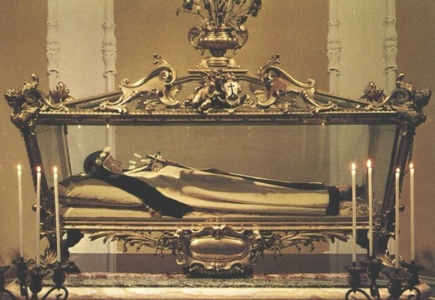
In March 19, 1934, Pope Pius XI entered Blessed Teresa Margaret of the Sacred Heart in the register of saints. In Germany, the new saint is virtually unknown outside of the Carmelite Order. Her life was quiet and hidden. She died on March 7, 1770 at the age of 22, and of this short lifespan, she spent five years in the Carmelite monastery in Florence. She performed no brilliant, attention-getting deeds, nor did her reputation reach the wider world. She spent her life living quietly and with virtue.
4. Saint Vincent de Paul, Died 1660
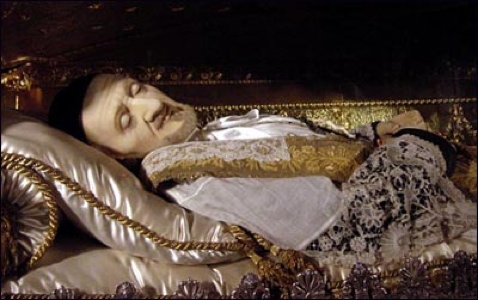
Saint Vincent de Paul studied humanities at Dax with the Cordeliers and he graduated in theology at Toulouse. Vincent de Paul was ordained in 1600, remaining in Toulouse until he went to Marseille for an inheritance. On his way back from Marseille, he was taken captive by Turkish pirates to Tunis, and sold into slavery. After converting his owner to Christianity, Vincent de Paul was freed in 1607. Vincent returned to France and served as priest in a parish near Paris. n 1705 the Superior-General of the Lazarists requested that the process of his canonization might be instituted. On August 13, 1729, Vincent was declared Blessed by Benedict XIII, and canonized by Clement XII on June 16, 1737. In 1885 Leo XIII gave him as patron to the Sisters of Charity.
5. Saint Silvan Died circa 350
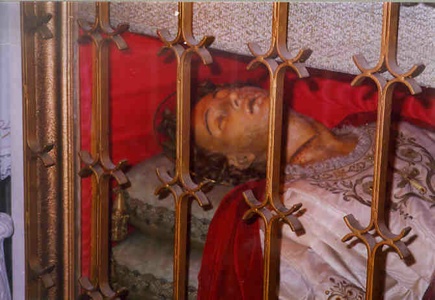
There is little known about Saint Silvan except that he was martyred (killed for his faith). Considering his body is over 1,600 years old, it is remarkably preserved.
6. Saint Veronica Giuliani, Died 1727
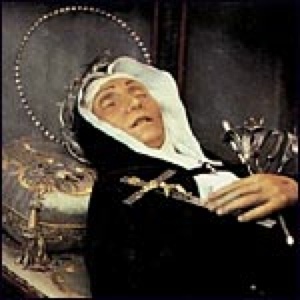
Saint Veronica Giuliani (Veronica de Julianis) (1660-July 9, 1727) was an Italian mystic. She was born at Mercatello in the Duchy of Urbino. Her parents, Francesco Giuliana and Benedetta Mancini, were both of gentle birth. In baptism she was named Ursula. According to the Catholic Encyclopedia, she showed signs of sanctity from an early age. Her legend states that she was only eighteen months old, she uttered her first words to upbraid a shopman who was serving a false measure of oil, saying distinctly: “Do justice, God sees you.”
7. Saint Zita, Died 1272
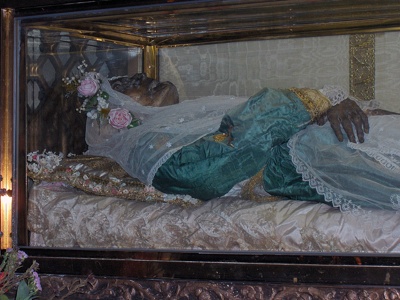
Saint Zita (c. 1212 – 27 April 1272) is the patron saint of maids and domestic servants. She is also appealed to in order to help find lost keys. Zita often said to others that devotion is false if slothful. She considered her work as an employment assigned her by God, and as part of her penance, and obeyed her master and mistress in all things as being placed over her by God. She always rose several hours before the rest of the family and employed in prayer a considerable part of the time which others gave to sleep.
8. Saint John Bosco, Died 1888
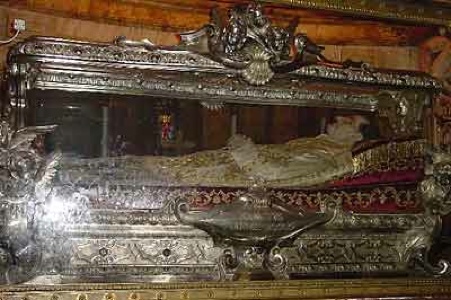
Saint Don Bosco, born Giovanni Melchiorre Bosco, and known in English as John Bosco (August 16, 1815 – January 31, 1888), was an Italian Catholic priest, educator and recognized pedagogue, who put into practice the dogma of his religion, employing teaching methods based on love rather than punishment. He placed his works under the protection of Francis de Sales; thus his followers styled themselves the Salesian Society. He is the only Saint with the title “Father and Teacher of Youth”.
9. Blessed Pope Piux IX, Died 1878
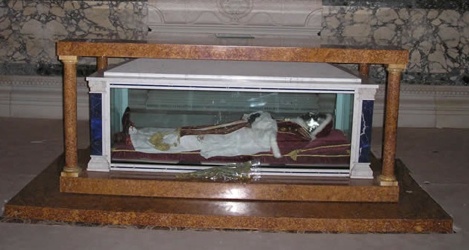
Pope Pius IX (May 13, 1792 – February 7, 1878), born Giovanni Maria Mastai-Ferretti, reigned as Pope of the Roman Catholic Church from his election in June 16, 1846, until his death more than 31 years later in 1878. Pius IX was elected as the candidate of the liberal and moderate wings on the College of Cardinals, following the pontificate of arch-conservative Pope Gregory XVI. Initially sympathetic to democratic and modernizing reforms in Italy and in the Church, Pius became increasingly conservative after he was deposed as the temporal ruler of the Papal States in the events that followed the Revolutions of 1848.
10. Blessed Pope John XXIII, Died 1963
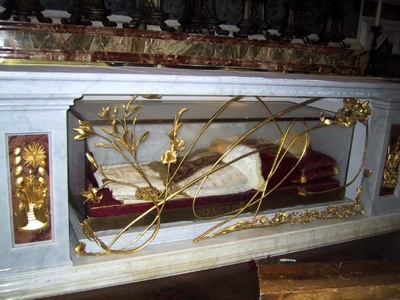
Pope John XXIII (Latin: Ioannes PP. XXIII; Italian: Giovanni XXIII), born Angelo Giuseppe Roncalli (November 25, 1881 – June 3, 1963), was elected as the 261st Pope of the Catholic Church and sovereign of Vatican City on October 28, 1958. He called the Second Vatican Council (1962-1965) but did not live to see it to completion, dying on June 3, 1963, two months after the completion of his final encyclical, Pacem in Terris. He was beatified on September 3, 2000, along with Pope Pius IX, the first popes since Pope St. Pius X to receive this honour.
- Incorruptibles are typically found lifelike, moist, flexible, and contain a sweet scent that many say smells like roses or other flowers, for years after death.
- Incorruptibles are almost never embalmed or treated in any way due to the religious order's beliefs that the person came from.
- Incorruptibles remain free of decay, some for centuries, despite circumstances which normally cause decay such as being exposed to air, moisture, other decaying bodies, or other variables such as quicklime, which is typically applied to a corpse to accelerate decomposition.
- Incorruptibles many times contain clear, flowing oils, perspiration, and flowing blood for years after death, where accidental or deliberately preserved bodies have never been recorded to have such characteristics.
- Other partial incorruptibles have been found throughout the centuries where certain parts of the body decay normally, while other parts such as the heart or tongue remain perfectly free of decomposition.
What is most astounding of all is the fact that for each incorrupt body discovered, after research has been done to determine who the person was, it has always been determined that the person was an extremely devout Catholic. This inevitably leads to the question, How can the process of decay, which has no intelligence, choose which bodies to devour and not to devour, and why do they happen to be devout Catholics? (For claims of incorrupt Orthodox Christians, we could not find proof for them during our research. Please see our page on the subject here.) There is no other way to describe this phenomena than to state that it is supernatural rather than natural, and that it is simply miraculous.
In addition, many unexplainable miracles have occurred throughout history when people have come in contact with these incorrupt remains, and despite regular medical examinations, scientists have not determined why. These incorrupt bodies are on display all over the world to this day (mainly in Europe), and nearly all bodies who have been identified and whose background has been researched thoroughly, have been canonized by the Catholic Church as Saints due to their devout Catholic life.
It is also interesting to note that while only a small number of devout Catholics have been given the gift of incorruptibility, it does appear that some Saints have been specifically chosen to have this miraculous phenomena so as to help confirm significant events involved with them. For example, the supernatural preservation of Jacinta Marto helps confirm the authenticity of the Miracle at Fatima, the incorrupt state of Saint Bernadette Soubirous gives credence to the Miracles at Lourdes, and the incorruptibility of Venerable Mary of Agreda gives credence to her revelations she wrote in the "Mystical City of God". Saint Margaret Mary Alacoque's revelations about the Devotion to the Sacred Heart of Jesus is also given credence along with Saint Catherine Laboure's apparitions of the Virgin Mary, and Pope St. Pius X's fight against modernism. Other examples are below.
Note that some incorrupt bodies that have been discovered and placed on display have had make up or wax added to them to improve their appearance. This is due to the fact that some bodies, while incorrupt, may not appear as beautiful as others, or may only be partially incorrupt while others are fully incorrupt. To those non-believers reading this page, these minor touch-ups are irrelevant when it comes to the state of a body's incorruptibility; no amount of make up or wax could possibly prevent these bodies (some centuries old!) from decaying once placed on display. The majority of incorrupt bodies remain incorrupt after being put on display, regardless of whether they have been touched up or not.


Submit News/Videos/Links |
Discuss article |
Article Link
|
More unsolved mysteries on Unexplained Mysteries
|












![]()